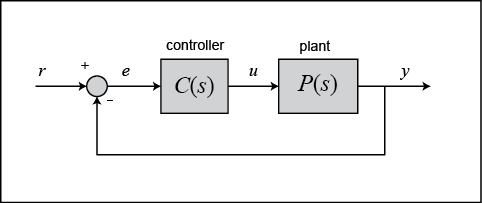Open loop transfer functions are an important tool for engineers and researchers, providing a powerful and concise way to analyze the behavior of linear systems. While it can be difficult to understand at first, once grasped, open loop transfer functions provide a versatile and intuitive way to visualize how a system behaves in response to inputs. Understanding how to properly use open loop transfer functions can have a major impact on research and technology projects.
To illustrate the usefulness of open loop transfer functions, consider a simple example: a car. In order to make the car move, an engineer must be able to control its velocity. The engineer can do this by designing a system that will respond to certain inputs, such as steering wheel angle, accelerator pedal position, and brakes. In order to accurately model the car's behavior, the engineer will need to account for the fact that the car's velocity will depend on these inputs. This is where the open loop transfer function comes in.
Open loop transfer functions allow us to represent the car's behavior as a mathematical equation that describes the output (velocity) as a function of the inputs. This equation can then be used to predict how the car's velocity will change in response to different inputs. By analyzing the open loop transfer function, the engineer can determine how much input is necessary to achieve a desired output, allowing them to create a more efficient and effective system. Additionally, open loop transfer functions can be used to identify potential problems or weaknesses in the system, such as providing too much or too little input for a given output.
In addition to cars, open loop transfer functions can be used to analyze the behavior of any linear system, from basic electrical circuits to complex mechanical systems. By providing an easy way to analyze the system's behavior, open loop transfer functions can help engineers, researchers, and technicians improve their designs and optimize their systems. Ultimately, understanding open loop transfer functions can help researchers and engineers develop better products and technologies, leading to improved quality of life for everyone.

Solved A Derive Closed Loop Transfer Function For Chegg Com

Solved 1 Consider The Unit Feedback System With Chegg Com

Open Loop System Explained In Detail Eee Projects

Chapter 5 Root Locus Nov Two Conditions For Plotting Given Open Loop Transfer Function G K S Characteristic Equation Magnitude Ppt

Solved Consider The Unit Feedback System With Open Loop Chegg Com

Open Loop Transfer Function An Overview Sciencedirect Topics

Ppt Feedback Control Systems Fcs Powerpoint Presentation Free Id 2424987

Sing Gain And Phase Margins Matlab Simulink

Root Locus Example 1

Example 6 10 Consider The System Shown In Figure Chegg Com

Open Loop Transfer Function An Overview Sciencedirect Topics

Compute Open Loop Response Matlab Simulink

What Is Open Loop Control System Definition Advanatges Disadvantages And Applications Electronics Coach

Solved Consider The Open Loop Transfer Function In Chegg Com

Solved B The System Below Features Open Loop Transfer Function Defined In Example Part 2 But Placed A Negative Feedback 4575 52 55 8 Find Closed
Open Loop Transfer Function For The Virtual Rod With Point Mass Example Scientific Diagram

Control Tutorials For Matlab And Simulink Introduction Pid Controller Design

Transfer Functions Springerlink
